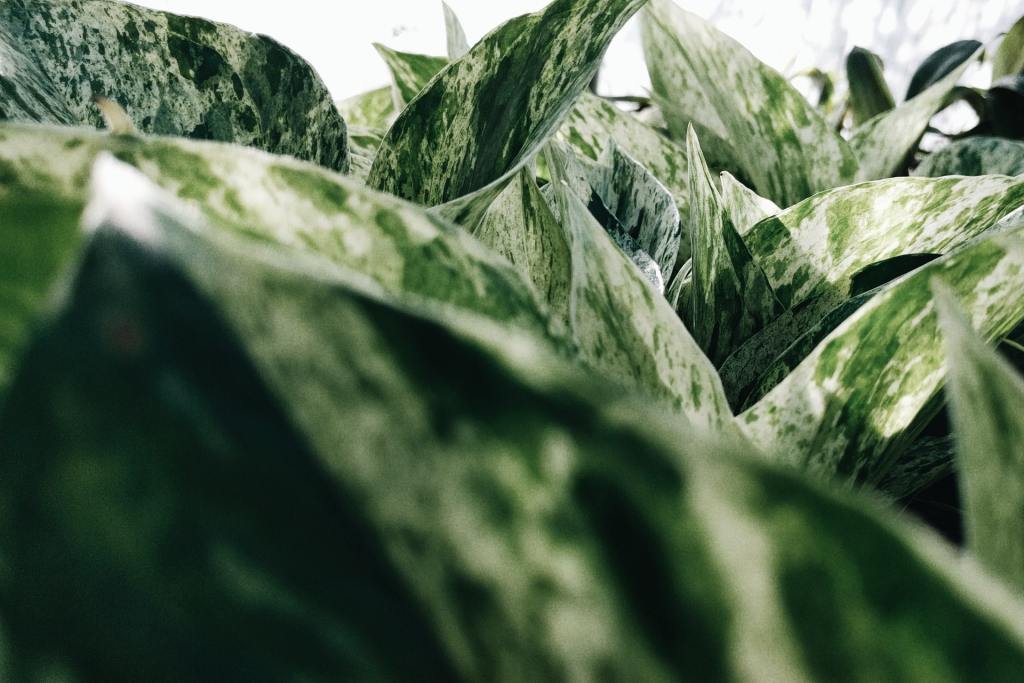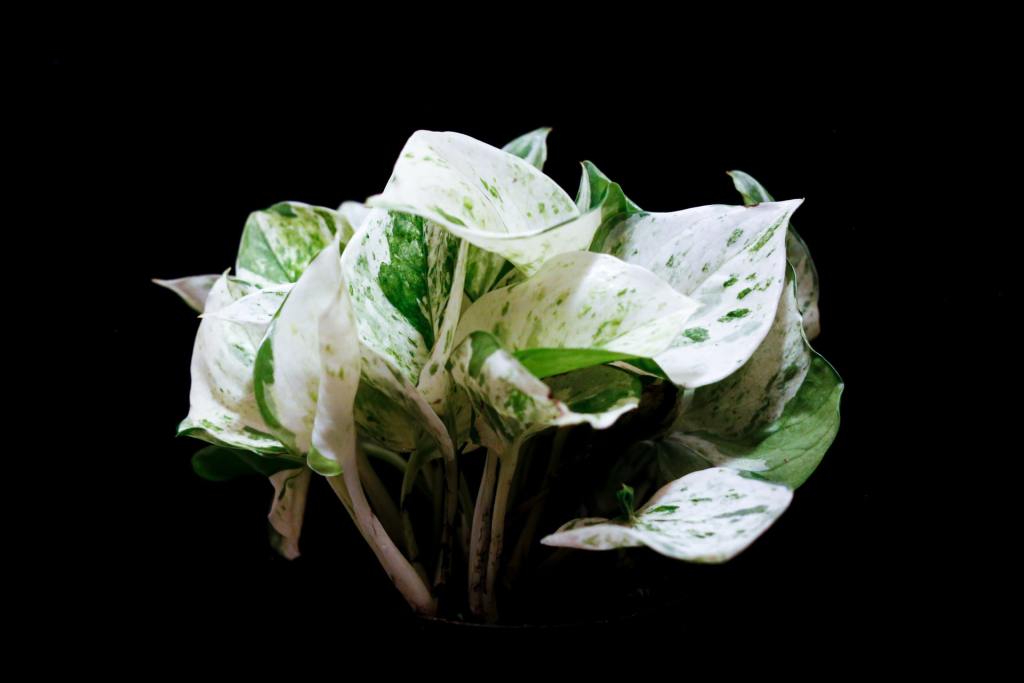If you’ve been around the plant community for longer than five minutes, you probably know what a marble queen pothos is. This prevalent plant is a beauty, and its commonness shouldn’t take away from its stunning foliage. You might already have one in your collection and want to be sure you’re caring for it properly, or perhaps you’re thinking of adding this gorgeous queen to your home and want to be sure you can provide it with what it needs. Either way, you’ll find everything you need to care for this plant in this guide!

What is a marble queen?
Native to french Polynesia, Epipremnum aureum, or marble queen pothos, is one of the most common houseplants in homes today. The leaves have cream and green variegation that’s iconic to this plant and what makes them so loved by plant lovers worldwide — so loved that many plant parents have not one but many marble queens in their collection. They’re easy to care for, making them beginner-friendly, and they grow fast, which means they’re always a satisfying addition to anyone’s indoor garden.
They can grow up to 10 feet long and 3 feet wide in indoor environments and can be grown in various ways. For example, this vining plant can grow up a trellis or moss pole, trained on a wall with hooks, or dangle overhead as a hanging plant. However, if allowed to vine, the plant will produce larger and healthier leaves since this gives the leaves a better angle for sunlight.
How to care for a marble queen
We have full confidence you’ll be able to care for this plant without much trouble at all but to be sure, let’s go over what this plant wants to grow big, full, and beautiful.
Water
The marble queen pothos doesn’t like its roots to stay wet for very long. This plant prefers to stay dry and then have a soaking once the soil is almost completely dry. We always recommend using a moisture meter to accurately gauge whether a plant needs to be watered or not. These meters can tell you how wet the soil is or isn’t all the way down and, more precisely, tell you the condition of the soil than your fingers can. However, if you don’t have one, you can use your fingers. Stick a finger as deep into the soil as it can reach and feel around to see how moist the soil is. Once it’s dry as far as you can go, it’s probably safe to give the marble queen pothos a deep watering.
Light
Although this plant can survive in virtually any lighting conditions, you’ll experience a much happier and healthier plant if you provide it with bright indirect light. This does not mean direct sunlight, which will burn the plant’s leaves, and excessive sunburn will kill the plant. Since the marble queen has white and cream variegation, it’s more susceptible to sunburn than other plants without variegation, so be extra sure your gorgeous queen isn’t getting any direct sun.
Food
There isn’t anything tricky about feeding this plant. First, find a balanced and gentle fertilizer — organic is best, we think — and apply it to the plant once a month during the spring and summer. You can still fertilize during the fall, but we recommend stopping completely when winter rolls around.
Temperature
The queen pothos is not a cold-hardy plant and can be easily damaged by cold weather, so be sure the plant doesn’t experience temperatures lower than 65 degrees. Luckily our homes tend to sit around 65 to 75 degrees, ideal conditions for this plant to flourish.

Humidity
The higher the humidity, the better, but the marble queen can still thrive in a home where the humidity is about 40 to 50 percent. If you have a dry home, you could add a humidifier to your space or mist the plants morning and evening.
We also suggest showering your pothos about once a month. This means taking the plant into the shower and spraying down the leaves and vines. This not only cleans it of the dust that can collect on the leaves, making it hard for the plant to breathe, but it also gives the plant a humidity boost it will love. We guarantee you’ll notice your plant perk up after its shower.
Toxicity
This plant is toxic to dogs, cats, and humans. Although the symptoms rarely (if ever) lead to death, it’s best to keep this plant out of reach. It could cause skin, mouth, and throat irritation, vomiting, or excessive drooling if ingested.
Additional care
To promote a luscious and bushy plant, you’ll want to prune your marble queen when it starts to get too leggy. Leggy vines are the longest and thinnest vines on your plant. If you notice a vine producing smaller leaves that are further apart, that’s the vine that needs pruning. This will encourage the plant to grow bushier and look fuller. To avoid wasting a perfectly healthy vine, you can propagate the pruned vine and add it back into the soil. This will also produce a more luscious-looking plant.
The marble queen is a plant lover essential, and with these care tips, you’ll be able to grow this plant to its fullest potential and enjoy its stunning variegated leaves for years to come.
Editors' Recommendations
- Stunning Monstera plants that you should add to your indoor plant collection
- Beyond basil and cilantro, add these unique plants to your indoor herb garden
- 5 easy-care spider plant varieties perfect for any home garden
- Easy hoya plants to add to your indoor plant collection
- Do ZZ plants cause cancer? Here’s the definitive answer



